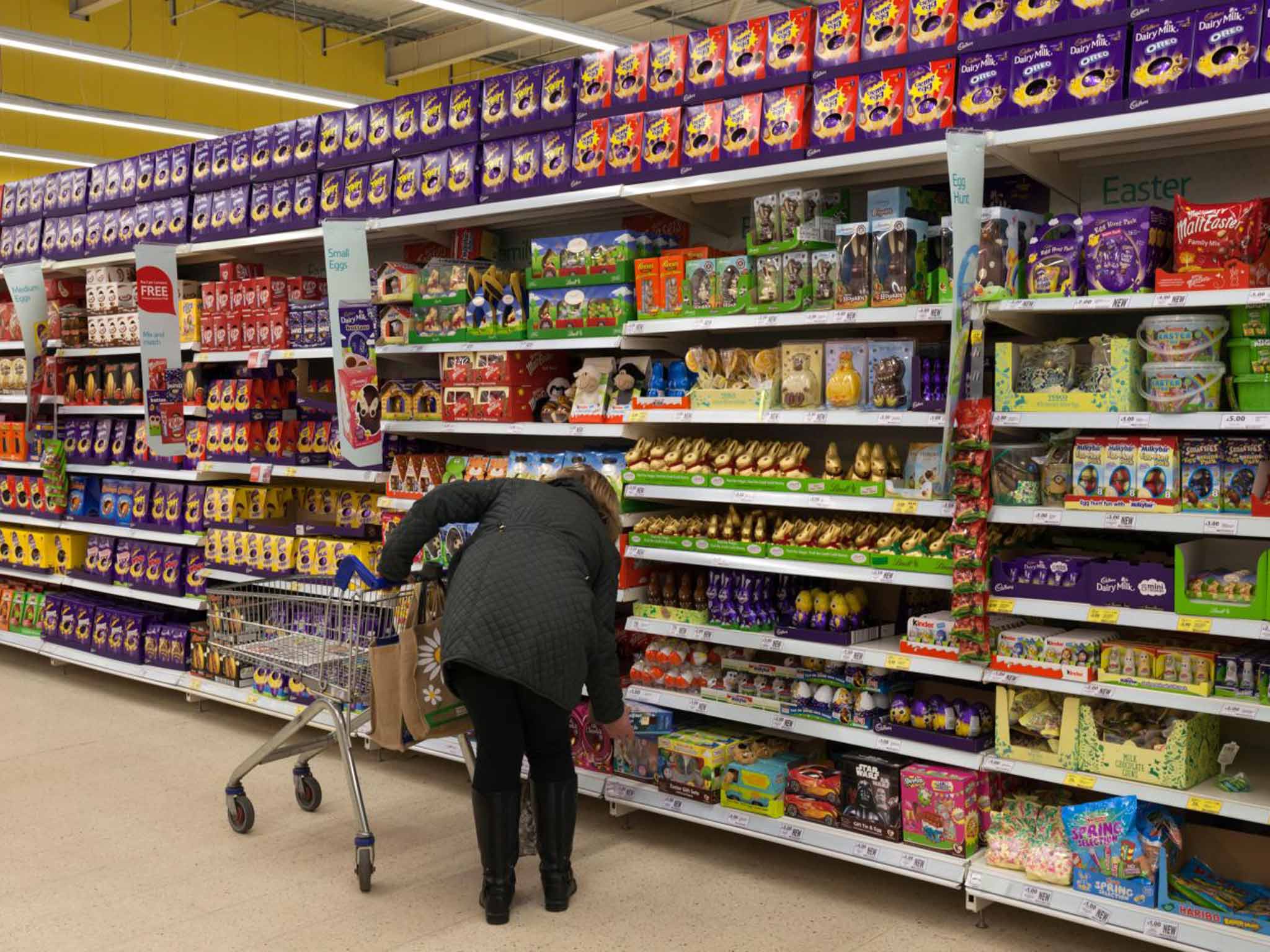Easter egg packaging is thoroughly misleading and has developed into a confectionery 'arms race'
Competition law is to blame, say Elizabeth Morgan and Alice Owen

How do we stop theproliferation in Easter egg packaging? Every year, supermarket shelves fill with garish, unnecessarily big boxes to exploit our shallow desires for the fanciest-looking chocolate eggs. The bigger the front face of the packaging, the more attractive it is, the more shelf appeal it has, and the more likely it is you'll buy it. But more packaging also means more plastic, cardboard, energy – and waste afterwards.
It's big business. Every year, more than 80 million boxed chocolate eggs are sold in the UK alone, leading to around £250m in sales. Meanwhile, food and drink packaging continues to cause environmental problems. The weight per person has not declined in the UK since figures were first generated in 1998 and accounts for three per cent of the total environmental footprint of British households, measured by energy.
Faced with public concern in 2008, confectionery manufacturers made some progress in 2009 towards reducing Easter egg packaging, but since then it has not been tracked and manufacturers still seem to be locked into unnecessarily large, eye-catching packaging. Sweets are usually an impulse or gift purchase, and sales are still largely driven by what they look like. Two identically sized chocolate eggs will vary in how well they sell: the one with a larger shelf “facing” will tend to generate more sales, simply because of its increased eye appeal. The result is that Easter egg manufacturers and retailers are in an “arms race”, taking up more and more shelf space. Each larger package means fewer individual units can be displayed in the same shelf space, leading to lower sales, which then requires higher profit margins to create the same revenue… and so on.
Meanwhile, confectionery manufacturers fear that discussing the problem between themselves and agreeing standards will be seen as restricting competition and they don't want to fall foul of competition law. Buyers at the big supermarkets are in the same situation: they can't talk to their confectionery suppliers unilaterally because they'd lose sales, and they can't talk to suppliers collectively because they fear the wrath of competition law.
Of course, Easter eggs need protecting. They're only fragile shells of chocolate, after all, and poor packaging would arguably mean greater waste from damaged goods, which have to be thrown away.
The challenge is to design gift packaging that uses as little material as possible – without limiting the egg's “standout” on the shelf. Resizing primary packaging (the part that shoppers see) would reduce the cost of cartons and transport costs for the manufacturers; no one wants to pay for a lot of empty space surrounded by an attractive box. Retailers don't really want to use precious shelf space on cartons containing lots of fresh air, either. And smaller packs would also reduce the amount of waste we have to throw away or try to recycle from our homes.
Manufacturers of detergents, deodorants and food and drink have all seen the environmental benefits of cutting back on unnecessary packaging. But since Easter eggs are bought almost entirely as gifts, looks are all-important, and size matters.
Big British-based manufacturers have drawn up a code of practice for responsible packaging. However, this same code sets out the gifting dilemma, too: “When a product is conceived as a gift or luxury item, it is recognised that the packaging will reflect the presentational nature of the product and may be more elaborate than functionally necessary.”
A simple rule on the ratio of packaging to product could change the way the system works without any one supplier or retailer disadvantaging themselves against their competition. This sort of rule would mean less packaging, lower transport costs, less waste, and more sales per unit of shelf space. Finally – lest we forget them – consumers would be less disappointed when they open their Easter eggs.
A longer version of this article first appeared on The Conversation (theconversation.com)
Subscribe to Independent Premium to bookmark this article
Want to bookmark your favourite articles and stories to read or reference later? Start your Independent Premium subscription today.

Join our commenting forum
Join thought-provoking conversations, follow other Independent readers and see their replies